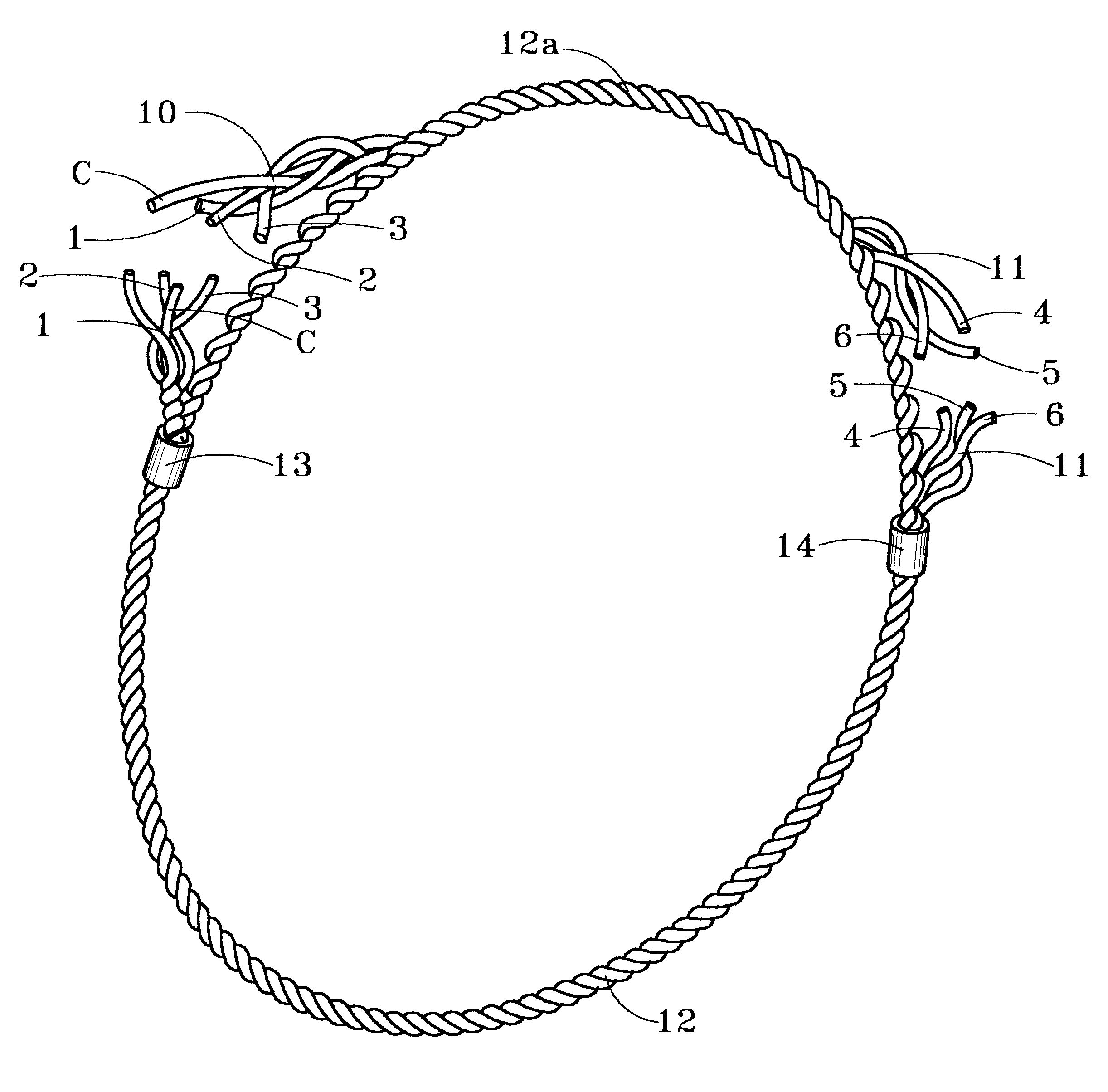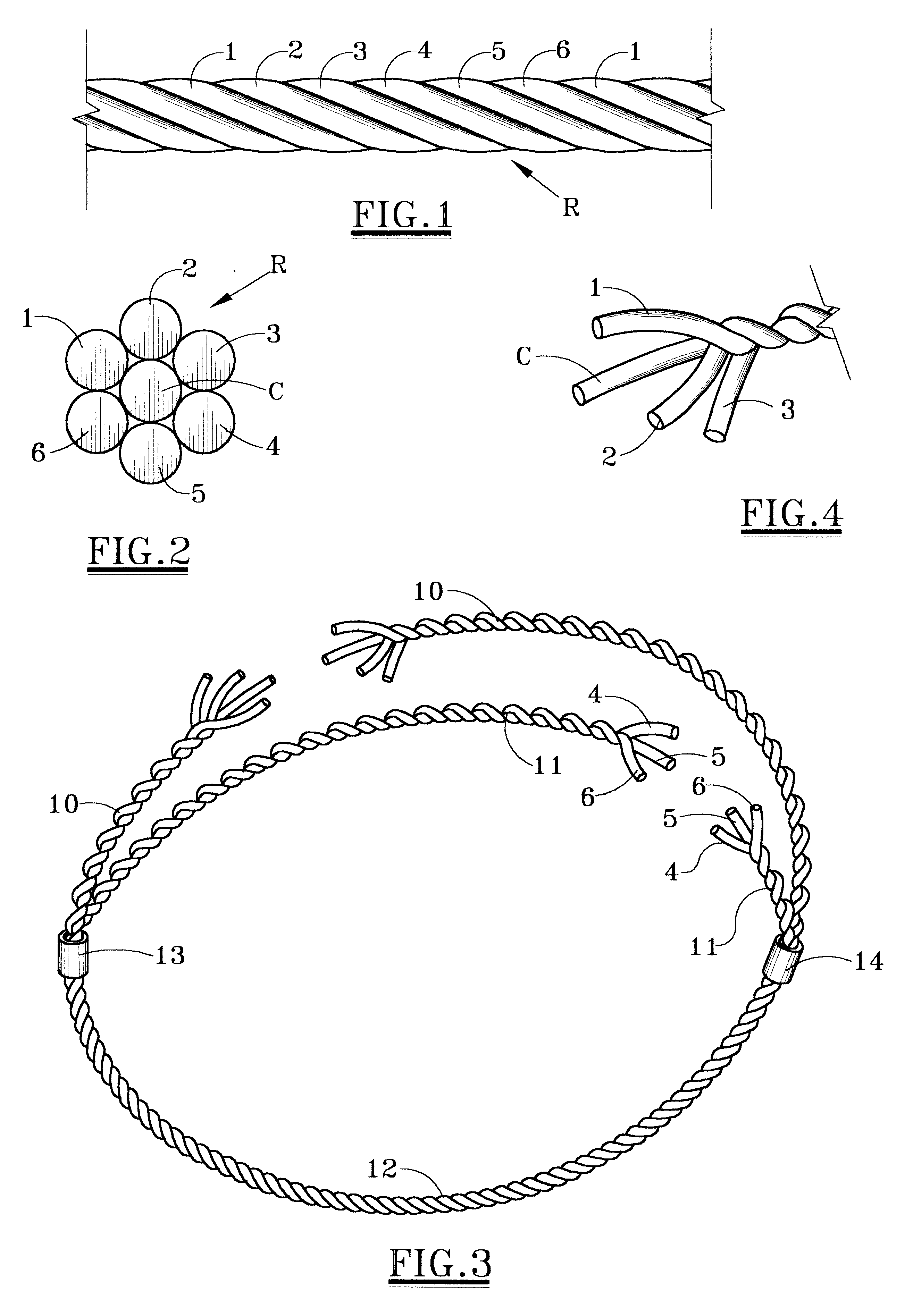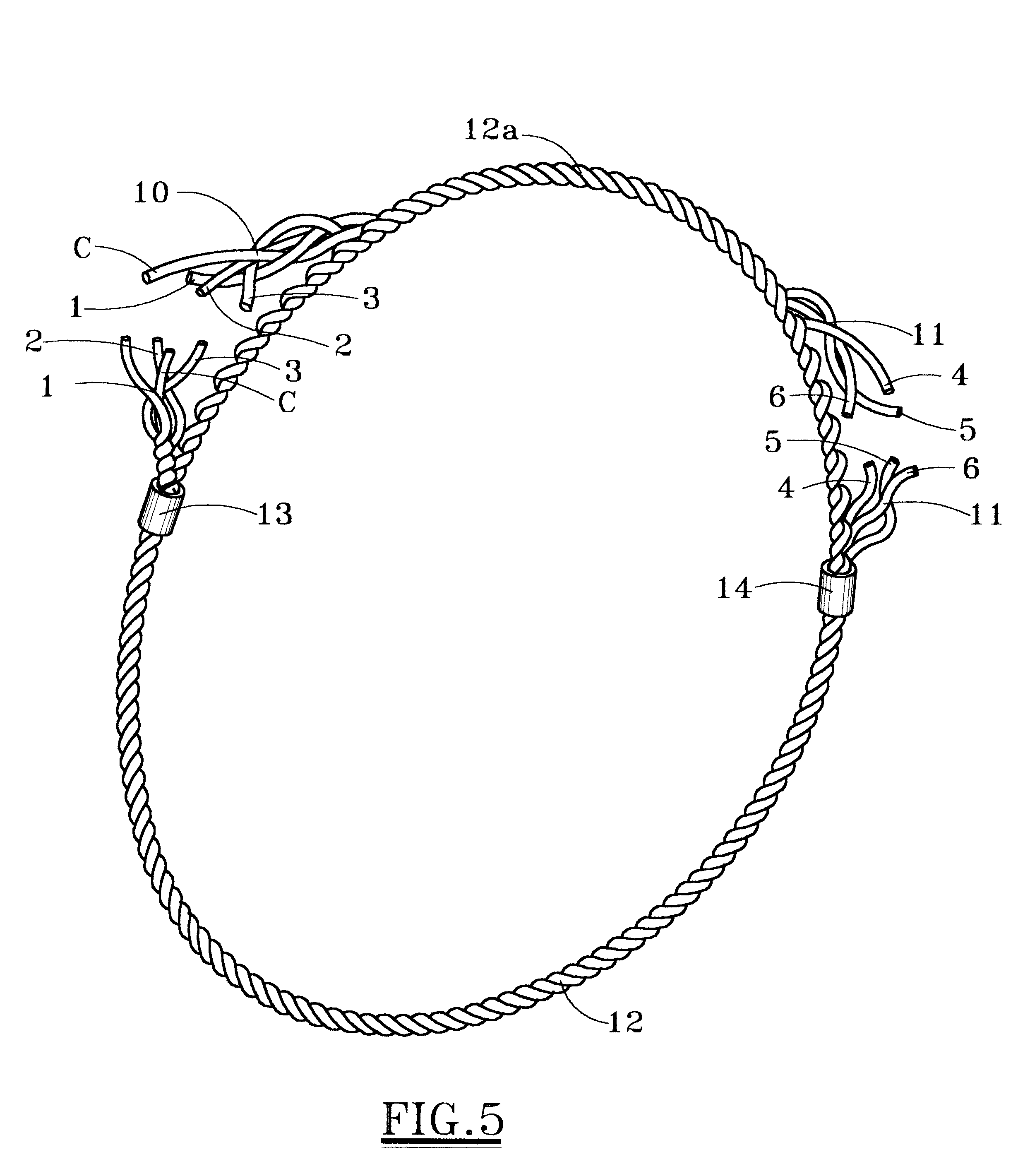Wire rope sling and methods of making same
a wire rope and sling technology, applied in the direction of snap fasteners, buckles, transportation and packaging, etc., can solve the problems of increasing the length of the sling required by the larger diameter wire rope, the inability to manufacture large-capacity slings in the prior art, and the failure of catastrophic failure, etc., to achieve low cost, increase lifting capacity, and low headroom
- Summary
- Abstract
- Description
- Claims
- Application Information
AI Technical Summary
Benefits of technology
Problems solved by technology
Method used
Image
Examples
Embodiment Construction
Referring first to FIGS. 1 and 2, there is shown a section of wire rope R comprising a core C and six strands of wire 1, 2, 3, 4, 5, 6 helically laid around the core. The lay length of the rope is approximately equal to the distance between the two reference numerals "1" in FIG. 1. The core C can be made of any suitable material which provides proper support for the strands 1-6 under normal bending and loading conditions, e.g. fibers or steel. If steel, the core may consist of a strand or an independent wire rope.
The strands are made of two or more wires, laid in any one of many specific geometric arrangements, or any combination of steel wires with other materials such as natural or synthetic fibers. A strand can be made up of any number of wires and the wire rope can be made of any number of strands. However, a six strand wire rope is most commonly used for circular slings or grommets.
In initial steps of making the sling or grommet of the present invention, the wire rope R is cut ...
PUM
 Login to View More
Login to View More Abstract
Description
Claims
Application Information
 Login to View More
Login to View More - R&D
- Intellectual Property
- Life Sciences
- Materials
- Tech Scout
- Unparalleled Data Quality
- Higher Quality Content
- 60% Fewer Hallucinations
Browse by: Latest US Patents, China's latest patents, Technical Efficacy Thesaurus, Application Domain, Technology Topic, Popular Technical Reports.
© 2025 PatSnap. All rights reserved.Legal|Privacy policy|Modern Slavery Act Transparency Statement|Sitemap|About US| Contact US: help@patsnap.com



